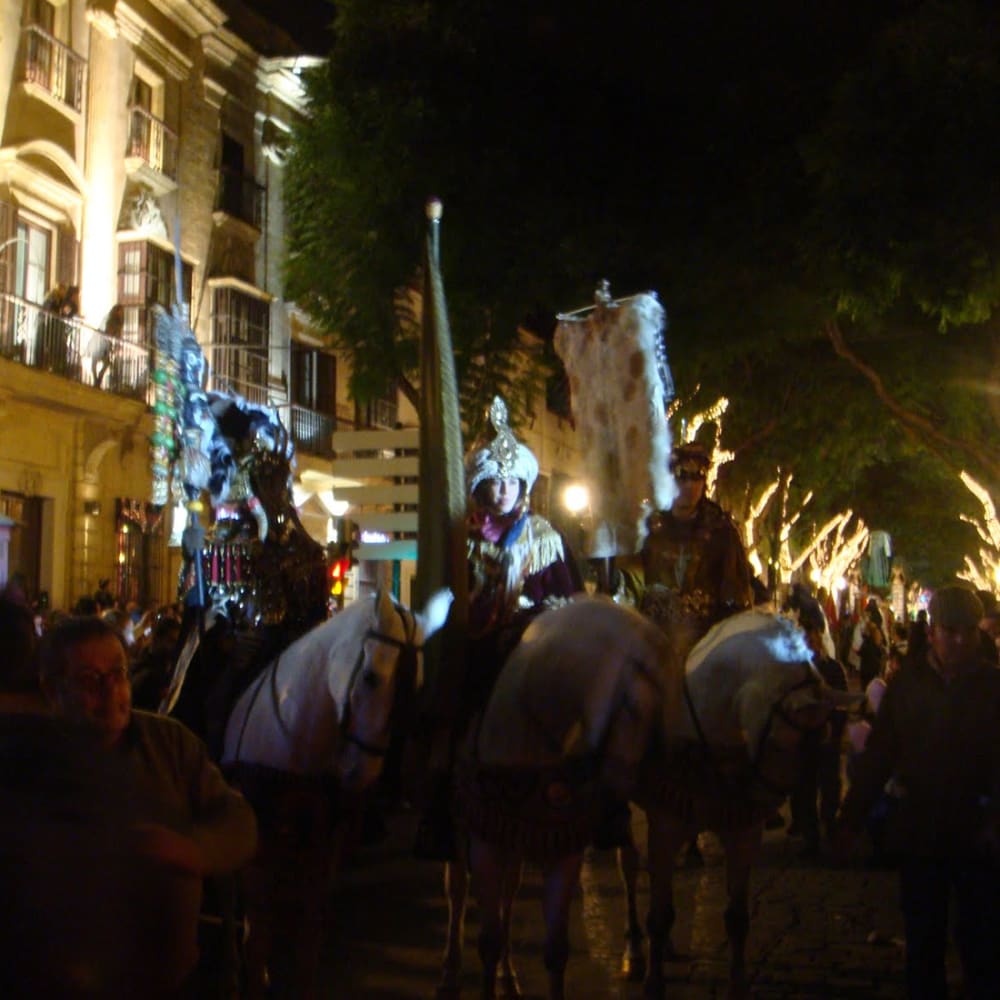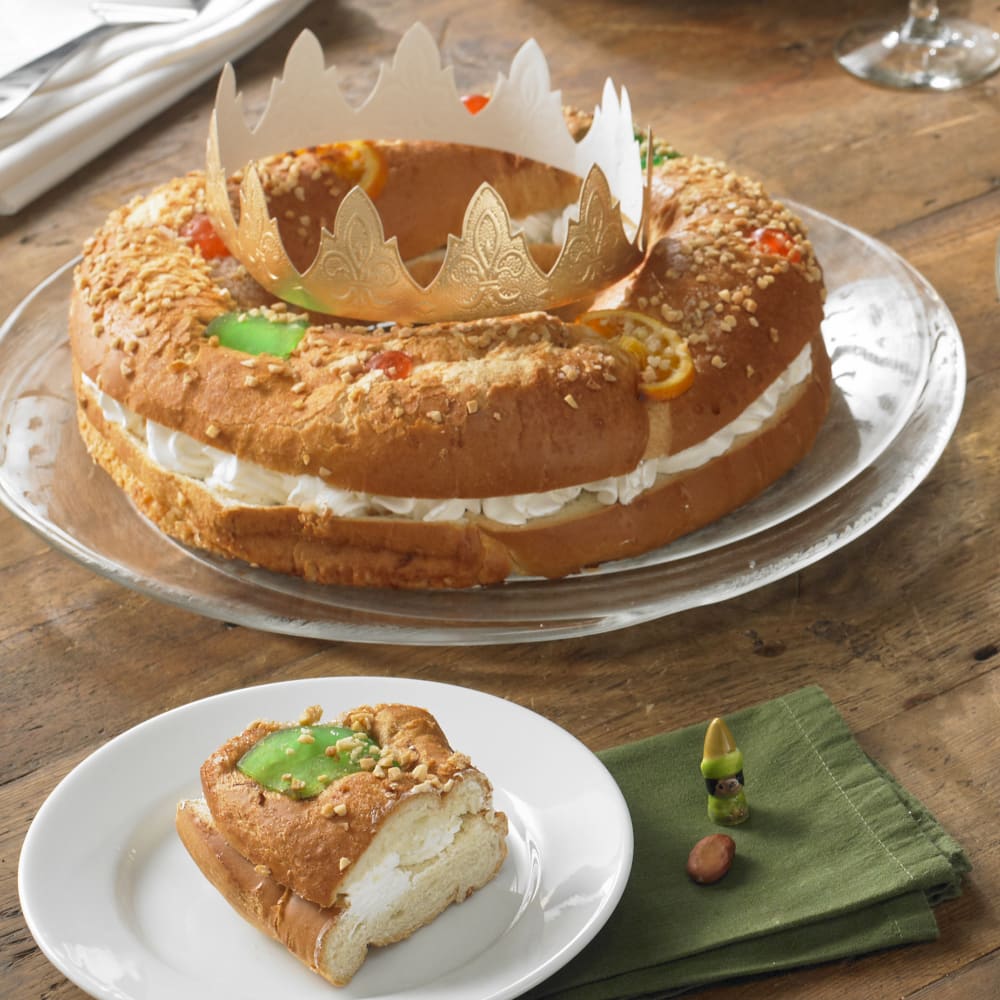The Joy of Children
Don Harris | January 2013




Three Kings Day is all about the joy of children as they join the whole community to celebrate the coming of the Magi. One of my favorite essays in my book, The Heart of Spain, describes one of the most delightful celebrations in Spain.
Three Kings Day, the sixth of January, is still alive and well in Spain. The local parades, the Magi, the happy children scrambling for caramelos - it is Epiphany, the culmination of the Christmas festivities, and it remains intact - very traditional and very Spanish.

It is one of the religious celebrations which are central to the identity of Spain. That most Spanish of all events, Semana Santa, is still so laden with emotion, that the suffering of Good Friday almost eclipses the Resurrection as a focus of devotion and celebration.
The Spanish Three Kings Day is quite different in its focus. Rather than being devotional, it has always been the festival for children and the family. The celebration of the arrival of the Wise Men, the Magi, is an official excuse to go all out in showering attention and affection on their children - who are singularly treasured in the Spanish culture.
Modern Spain has in many ways been heavily influenced by modern secular culture imported from America and her northern European neighbors. Santa as a mercantile symbol is in most of the stores. Modern Spaniards even have Christmas trees!
But if you want to experience traditional Spain, go to the towns and celebrate Tres Reyes with the local people, where Three Kings Day is still central in the children's hearts. The Christmas season begins with a Carta de Reyes, a letter that children pick up in the post office, fill out and mail free of charge to the Three Wise Men.
It reaches its climax with a parade, which in Spanish is called the Cabalgata - a cavalcade - a ceremonial procession, especially on horseback. This Friday evening, as is customary on the fifth of January, the eve of Three Kings Day, thousands of excited children and their parents will gather along the streets of virtually every city and village in Spain in anticipation of the arrival of the Three Kings.
One of them, Baltazar, is an anachronism: reflecting the long time Muslim presence in Spain, he appears as a Moor and an African! He is a favorite of the children since, until recently, black Africans were a rarity in Spain. He is accompanied by the other Magi, Melchior and Gaspar, and together they toss candy into the excited crowd of children. In some towns, the Magi stop to greet the children personally, giving them small presents as well.
After the excitement of the parade, it is time to prepare the children to go to bed. But just before bedtime on this magic eve, the children prepare three items that they will leave by the door for the Wise Men: a dish of water and hay or straw for their camels, rich turrón made of honey and almonds (such as we have at La Tienda), and a glass of wine or sherry for the Kings. Next to the provisions they have prepared, the children leave a pair of shoes in which they hope the Kings will deposit a gift or two.
When they awaken next morning the children discover their gifts, and for breakfast they might enjoy chocolate a la taza (thick hot chocolate) and Roscón de Reyes - sweet bread embedded with candied fruit - similar to Easter bread in Greece and Scandinavia. Within the bread is hidden a prize, perhaps a small coin or a ring. Whoever finds it is King for the day.
Late in the afternoon, after dinner and a siesta, the children and their parents visit the homes of their extended family, grandparents, aunts and uncles or a favorite cousin, to see what the Kings have given them. It is an all day evolution devoted to the family.
My wife Ruth and I, and our sons, have many fond memories of Tres Reyes. One year we visited the mountain town of Guadalupe, where we saw the children born the previous year being presented for a blessing on the monastery steps. Soon thereafter the Wise Men arrived dressed in their exotic Near Eastern attire. They did not arrive on camels, however, but on a flat-bed hauled by a John Deere tractor. The kids could care less about the incongruity; they were delighted to catch the candy that the Three Kings were tossing to them.
Another time Ruth and I visited the lovely town of Trujillo in Extremadura. The entire population gathers in the vast Plaza Mayor each Tres Reyes Eve, under the watchful eye of Conquistador Juan Pizarro who is looking down from a huge bronze statue.

As we stood among the gathering we could see grandmothers lovingly fussing over their grandchildren safely tucked in their strollers. Fathers and grandfathers were playing with the young boys who were scampering through the crowd of their neighbors.
Families would stop to admire the Belén, or crèche, situated in the plaza near the stone steps. A beautiful young girl next to the manger was dressed as Mary. She was watched over by a young boy Joseph – who was a little less convincing with his cotton batten beard. Gathered around the manger were a few teen-aged shepherds. And then, at the appropriate time, their fathers and uncles rode into town on handsome horses, dressed as the Three Kings. The carts that accompanied them were filled with candy dispensed by young señoritas.
Perhaps the most elaborate festivity was the one Ruth and I, and two of our sons, witnessed in the holy city of Santiago de Compostela – the goal for pilgrims throughout the world. As we headed across the Plaza de Obradoiro toward the cabalgata of the Kings, we were jostled by the crowd of children with their parents and grandparents.
We peered around the medieval stone columns of Santiago’s ancient Romanesque arcades to witness the arrival of the Magi. Their entrance was quite impressive – out of the misty night appeared three men in elaborate costumes, mounted on impressive steeds, and accompanied by truck after truck of caramelos for the children.
What a wonderful way to end the holiday season - providing some event to delight our children. Earlier I mentioned that Spaniards treasure their children, and I used the word "treasured" purposely. If there was one characteristic, above all others, that attracts me to Spain, it is seeing how they cherish their children – not just the parents, whom you would expect, but the whole community.
Other mothers (and grandmothers, of course), whom we would view as strangers, will joyfully come up to a little baby and admire her profusely. Then they will reach into their purse for an omni-present caramelo to present to the child. ¡Que guapa! – How beautiful! – She will exclaim. Those women are not strangers but part of a broader community that supports the child all her (or his) life.
The English adage "children should be seen and not heard" is incomprehensible to the traditional Spaniard. As many of you who have traveled the byways of Spain know, children are everywhere. When Ruth and I were eating dinner at 10 o'clock in the evening in Andalucía, we would see the Spanish parents enjoying dinner together, while all around their tables the children were playing. And why not? They are as much part of the family as the older people. In fact they are our hope.
I hope you had some time to enjoy your children and grandchildren, nephews and nieces, this holiday season. I love to see the unbounded joy and wonder of little children as they discover the world around them.
Felices fiestas y un Prospero Año Nuevo,
Don Harris

